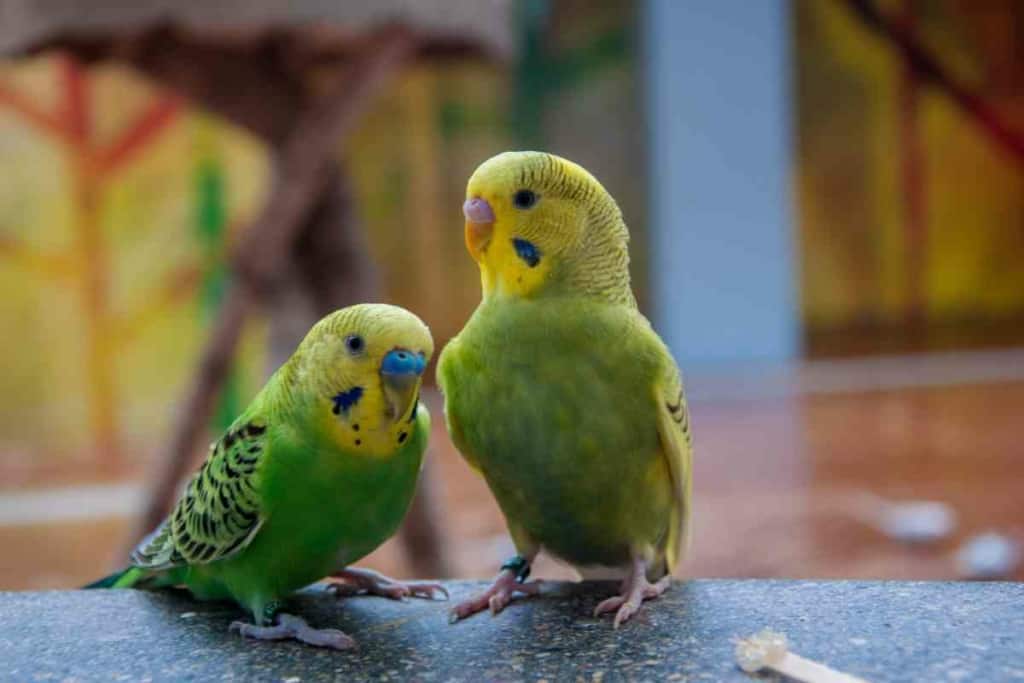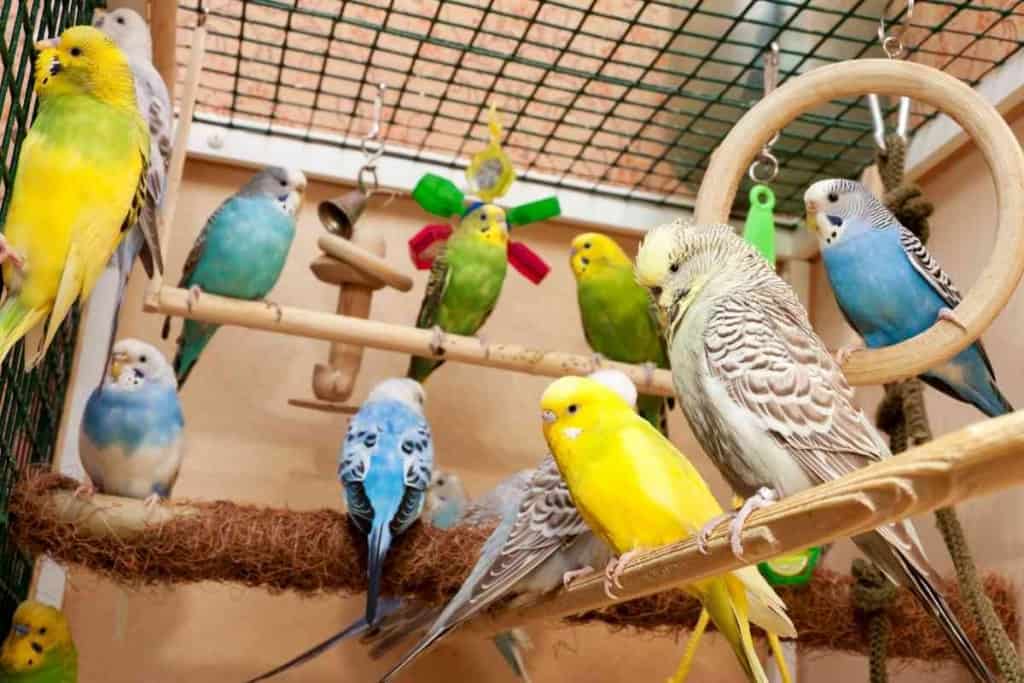How Do Parakeets Mate: How it Works, Gestation Period, and More!
Everything about parakeet mating and gestation can be a little confusing if one is not knowledgeable and/or experienced. Mating behavior in your pet bird can come as a surprise, and after the mating process, chicks are soon to follow. Here is a guide to parakeet mating and gestation which will make it easier for you to understand the process and dos and don’ts of parakeet mating.
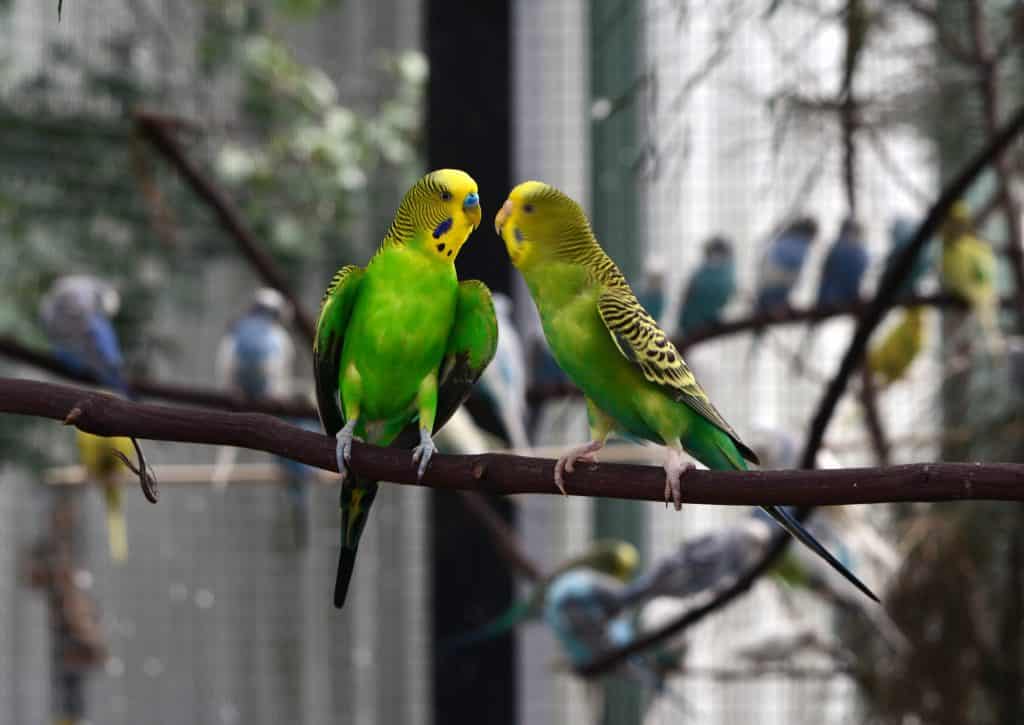
What is the mating and gestation period of parakeets and how can you tell?
When parakeets are ready to mate, they will start to perch close to one another. The female may regurgitate her food on the male, and she will lift her tail. There will be a lot of close proximity and much “billing and cooing” going on. The female parakeet lays eggs and will sit on them for about 18 to 20 days before the eggs hatch.
That’s just a small summary of mating and gestation which will give you a broad idea of how to tell and how long it takes. Parakeet mating and gestation happen most often during the springtime when the parakeets are most active. If your birds are behaving strangely, you may ask “Just how do parakeets mate, and are mind about to be parents?”
How to Breed Parakeets
Before you read further, the most important key to breeding parakeets is having birds that are completely healthy in every way, and make sure they also have no deformities.
#1: You must figure out if the pair of parakeets you have are true.
It is important to realize that any two pair of parakeets will bond with one another if there are no other birds presents.
So, if that were the case sometimes a pair can appear to be breeding when they are really just two females or two males.
Lucky for you, Parakeets are sexually dimorphic! Which means that just by their appearance you can determine their gender.
- Males: To be able to determine whether a parakeet is a male or female you’ll look at the cere (the area just above the beak where the nostrils are). If the parakeet has a blue cere and completely blue nostril then they are male.
- Females: Females also have a blue cere, but it will be a light blue color. There will also be a light ring around each of the nostril holes on the female. That is something you won’t see on a male. As the female matures the cere turns a tan brown, and the texture of the cere will be rough.
#2: Parakeets must bond in order to breed.
Bonding is an important step before breeding begins. Parakeets will find another on their own to bond with.
Though, if you want specific colors to bred from certain parakeets then you will want to select the female and male yourself.
Once you have chosen your pair, or once your pair have chosen each other you can place them into a roomy cage. That way they are able to get used to living in the same space as one another.
Once your parakeets have bonded, you can expect to see them sitting next to each other on a perch and they might even follow each other around.
You will know for sure the intensity of their bonding when you see the male start feeding the female.
That is when they are a truly bonded pair.
#3: Wait for pair to reach maturity and breeding condition.
Parakeets usually come to maturity at about one year of age. A way to know for sure of the maturity of your female parakeet is to look at her cere.
If her cere is brown, and crusty-looking then that is a sure sign that she is ready to start the breeding process. And you can set up the nesting boxes for them.
Breeding Set Up
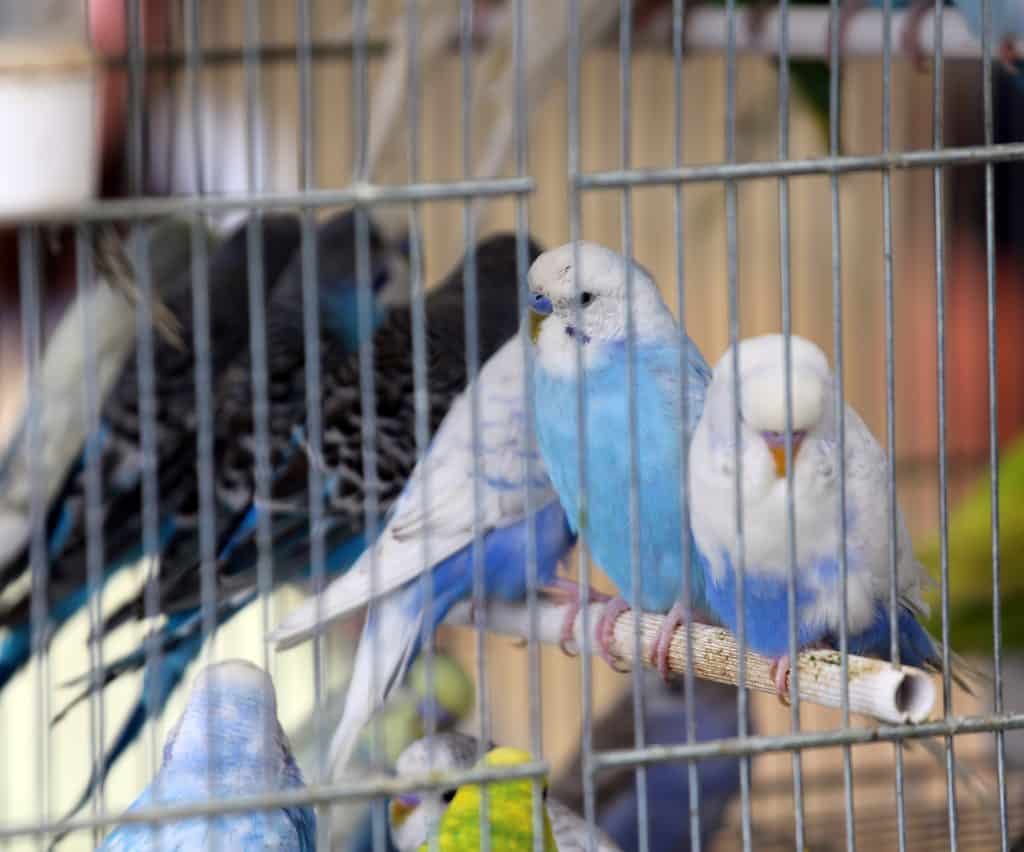
By having the proper breeding set up for your Parakeets will encourage them to breed. The following listed below are things you should have set up in order to begin the breeding process/
Breeding Cage
A cage that you want for your parakeets should have the following qualities:
- The measurements should be 24” L x 12” W x 16” H
- It should include a separate door to attach the nest box outside of (for your birds to have easy access to getting in and out)
- More than one perch should be inside the cage
- You’ll need to hang a mineral block and cuttlebone on the side of the cage (its purpose is to provide the female with calcium for making eggs)
- A dish for food and water
Nest Box
The boxes for nesting can
It would be ideal if you chose the design specifically made for Parakeets. Choose something that is rectangular with an opening at the end, and a circular indent in the floor for the eggs to rest in.
The box can also have a lid on top or on the side of the box. That is for easy access to the eggs or new hatchlings, you will want to keep an eye on them every one in a while.
Nesting Material
When it comes to the material you want to use for nesting, you want to make sure that it is safe for your birds to be around. S
- Aspen shavings
- Recycled newspaper
- Even shredded newspaper
An option that is by no means safe for your bird to be around is: cedar shavings. Their fumes are toxic to birds.
Another thing, don’t be too surprised if your Parakeet pair is pushing the nesting material out of the box. Just place it back inside. Parakeets are just fond of a bare interior.
Lighting
The amount of daylight a p
At times when the days are longer and they are in the breeding conditions, it can be helpful to extend the amount of daylight they are exposed to for a few hours.
The light can help the female Parakeet synthesize vitamin D, and that helps with the production of strong egg shells and bones.
Diet
As a breeder, two things you always need to live by when it comes to feeding your parakeets is variety and abundance. The amount of healthy, fresh food your pairs have to eat makes all the difference when it comes to nesting.
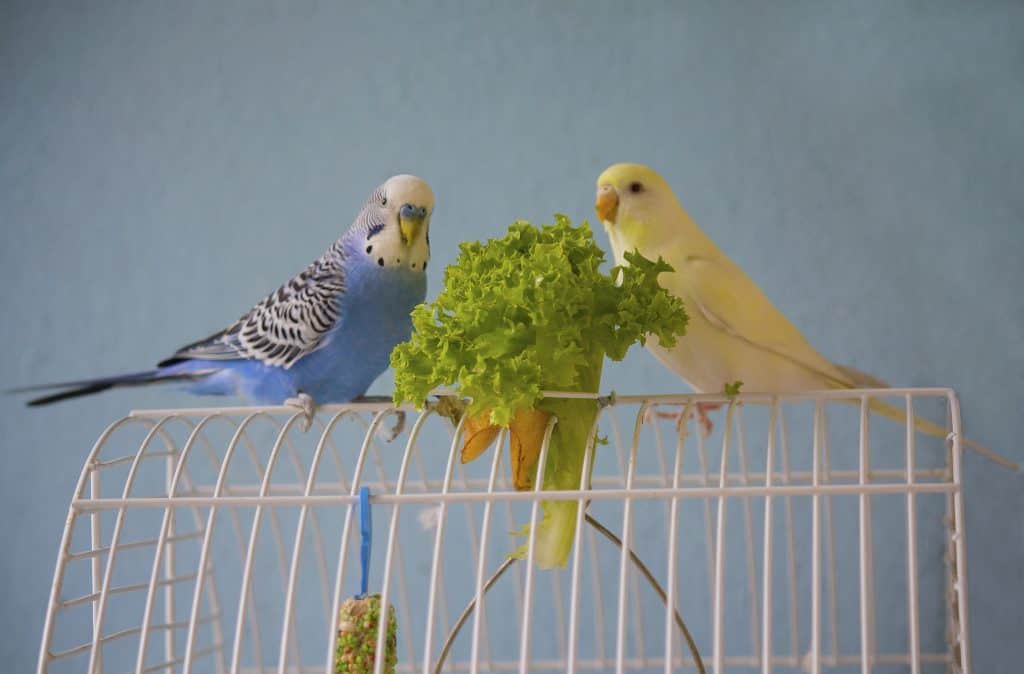
If you feed them regularly and give them food that is nutritional then they are more likely to nest.
Softer foods are a big advantage to getting your pair to settle into a breeding condition, another reason for soft food is for the chicks they will soon come to feed.
Feeding your parakeets these foods will ensure that they will continue to eat it once their chicks hatch.
Their diet should have the following:
An abundance of clean water: Water that is soiled can be a place where bacteria can grow. You should make sure to change the water dish at least 3 to 4 times a day! (Or whenever you notice that it is dirty)
Organic, fresh leafy greens, vegetables, and fruits: Some excellent choices to feed your pair of Parakeets are broccoli, carrots, peas, corn, apples, Swiss chard, kale, bananas, cooked sweet potatoes, and bell peppers! Be sure to wash and chop these options before you offer them up to your birds. Overall, these are all healthy choices!
Cooked, chopped eggs (or commercial egg food): Eggs provide protein and they are a softer food compared to some veggies or fruits. Another use for softer food is that it is easier for your male parakeet to feed the female. You can also chop up the shells into the eggs because it will provide calcium for the female.
High-quality seed mix for Parakeets: Seeds are not essential to a parakeets diet, but it can be a part of it. Choose something that has variety to it. Or you can even choose a hulled product that also has omega-3 in it as well.
High-quality pellet mix for Parakeets: Pellets can give nutrition to your bird with every bite they take. Be sure to keep pellets readily available for your pair.
An overall tip to consider is to throw away any old or soft food that has been sitting out for two or three hours and replace it with a fresher option.
This is to make sure your birds don’t ingest something that could be spoiled.
Fertilization and Egg Production
Once the pair you have chosen is evidently settled into their breeding set up it will only be a matter of time before they start breeding.
If you have been training with them, it is advised to stop any training completely. Just keep up with changing their water, food and waste tray every now and then.
When the female is ready to breed, she will lean forward on the
It can be possible for the male to breed the female more than once in a day. That will mean the female will start to lay an egg every other day.
The average parakeet clutch will be at least four to five eggs.
Incubation Process
Now once the female has laid her eggs she will start sitting on top of them. She might not sit on them until she has about two or three eggs in place. Each egg will hatch in about 18 days.
If the female sits on her first egg then one egg will hatch every other day.
Checking for Fertility
Eggs at times are not always fertile. A way to make sure whether the egg is fertile or not is by “candling” them. Candling is placing a strong flashlight in front of the egg.
If you do this, you must gently pick up the egg as you place it in front of the flashlight. You can then see a yellow glow with red lines on the inside. If you see this, that means it is fertile. If the egg is simply yellow with no red lines then the egg is infertile.
Over time, the eggs will become opaque which will make it harder to see the outline of the chicks inside.
While checking for the fertility of these eggs are important, it is best to keep in mind not to bother the nest since the mother might abandon it if you disturb it often.
Taking Care of Baby Parakeets
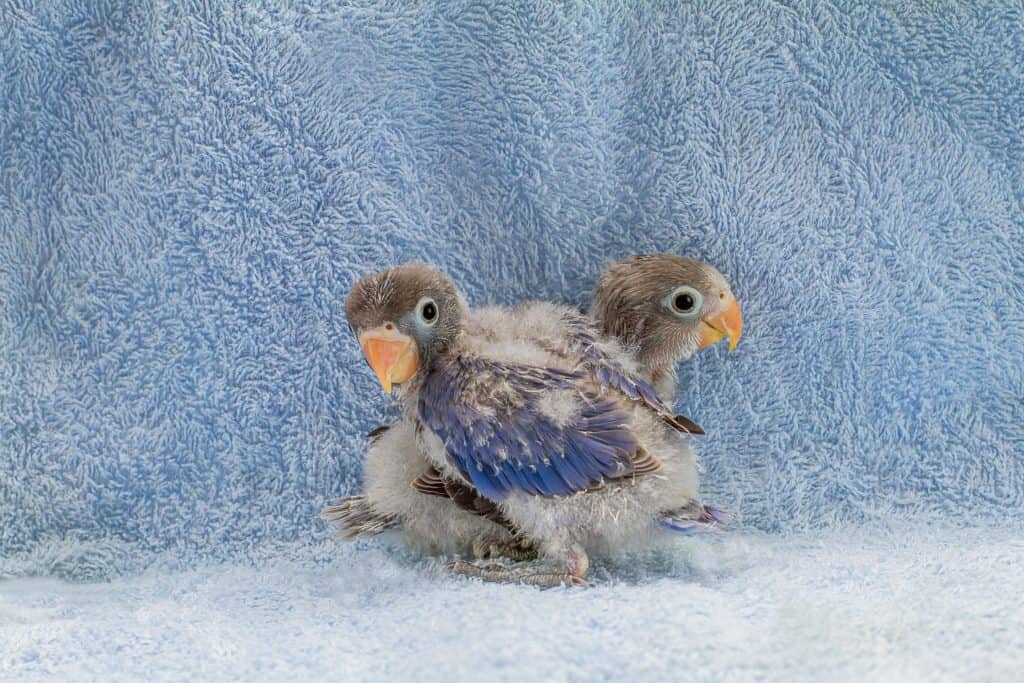
Once the eggs have hatched you will need to decide how to raise the chicks. You have two options. You either let the parents raise the chicks, or you hand feed the chicks yourself.
Letting the Parents Raise Their Chicks
Once hatched, parakeet chicks are quite tiny and that can be difficult for anyone to be able to handle and hand feed.
It is common for breeders to simply let the parents raise the chicks up until weaning. They will then hand them at least once a day once they are about 14 days old.
Male parakeets are known to feed the female because she only comes out of the nest to produce waste or drink from the water dish. Once the male feeds her she goes off to feed her chicks.
Hand Feeding
If you decide to hand feed the chicks yourself, you should know that hand feeding involves pulling the chicks from the best box once they reach 21 days old.
They will then have to be
Once the chicks have reached the age of 21 days old they will then need to be fed formula through a small syringe about every 3 to 4 hours till the crop empties.
Most formulas have instructions built into their packaging, and it also comes with information on how often you should feed your chicks as they grow more and more.
The food should be given to them with a temperature of 105 degrees F. The temperature makes sure that you do not burn the chicks’ crop but will still be heated enough for them to digest it.
Tips for easy hand feeding:
- Feeding will go easier if you have the chick face towards you.
- You will want to insert the tip of the syringe, gently, into the right side of the chick’s beak. You will also want to aim the formula into the back left of the mouth. If your chick is a bit of a mover, you can position the syringe to whatever is most comfortable for them.
- Once you slowly being to squeeze the syringe, watch the chick. They will start to bob their head up and down as it swallows the formula. Feeding them will become easier over time, just make sure you don’t flood their mouth with formula. They can choke to death.
- Once the chick has finished eating be sure to wipe away any formula that had gotten outside of its mouth. You can do this with a damp, warm paper towel.
- You can throw away any formula that wasn’t used, and clean the syringe afterward.
As the chicks grow older, the feedings will become longer and they may even require fewer feedings in the day, and this can become more evident as they begin to eat on their own.
Tips for Putting an End to the Breeding Activity
The easiest thing for you to do is to put your parakeets into separate cages. This will prevent you from having any chicks, but breeding activity will still continue because you can’t put a stop to animal hormones.
Here are some other tips you can follow to minimize breeding activity:
- Limit the Amount of Daylight – Cover your bird’s cage around 6 pm to fool her body into thinking that it isn’t breeding season.
- Remove the Nesting Box- This is probably the most helpful action to take in prevention. Don’t create opportunities for her to nest.
- Limiting Type of Food- Something that stimulates breeding is providing a variety of high nutrient foods. In the wild, during non-breeding months the options for food are very limited, so try to implement that into your home.
- Stop Chewing- Even though chewing food won’t activate the desire to breed, chewing other things such as wood blocks, toys, paper shredding will.
- Limit Petting- Though a short stroke the bird means, “good bird,” a longer pet means “I want to mate!”
Related Questions
How can you tell when a parakeet is about to lay an egg?
The female parakeet will start to shred paper at the bottom of the cage to make a nest, and then begin to strain and sit on the bottom of the cage. These are the signs to look for when a female parakeet is going to lay eggs.
How many eggs does a parakeet usually lay?
A female parakeet will usually lay 4-6 eggs. Eggs will be laid about every other day until there are no more eggs to be laid. The number of eggs that are laid can vary.
What should you do after your parakeet lays eggs?
After your parakeet lays her eggs, make sure they are in a safe place like a nesting box. If you do not have a nesting box, buy natural nesting hair for the eggs to sit on. After 22 to 30 days they will hatch.
Related Articles Just For You!
If you found this article about what Parakeet breeding useful, I suggest checking out one of these other articles.
- Parakeet mating and gestation period occur mostly during spring.
- Before breeding, ensure that your parakeets are healthy and free of deformities.
- To breed parakeets, you must confirm that you have a true male and female pair.
- Males have blue ceres (the area above the beak), and females have light blue ceres with a light ring around each nostril hole.
- Bonding is essential before breeding begins, and parakeets will find another bird to bond with.
- The maturity age of parakeets is around one year old, and females with brown, crusty ceres indicate they are ready to breed.
- To set up breeding, you need a cage measuring 24” L x 12” W x 16” H, a separate door for a nest box, perches, mineral blocks, cuttlebone, and food and water dishes.
- The nest box should have a rectangular design with an opening and a circular indent for the eggs.
- Safe nesting materials include aspen shavings or recycled newspaper, while cedar shavings should be avoided.
- Parakeets need about 12 hours of daylight.




